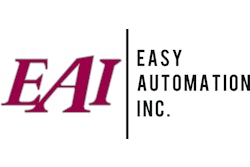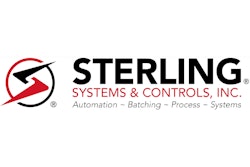
The full infographic as it appeared in print, can be found here.
Not that long ago, feed mills were operated completely by hand. Now a feed mill manager can be anywhere in the world, pull a phone from their pocket, and see not only what the feed mill is doing but make changes to the milling process right there.
This is all possible due to the advancement and adoption of automated control solutions. Feed & Grain has talked to experts about the past, present and future of automation in the feed manufacturing industry and created an infographic, "The History of Automation in Feed Mills," that first appeared in the October/November 2022 issue of the magazine.
Below is a breakdown of that infographic with more insight from feed mill automation experts.
Turn-key processes are less efficient, more labor intensive and less accurate than even basic levels of automation. A fully turn-key feed mill would be hard to find in the U.S. today, many feed mills still use turn-key processes, especially ingredient measuring, to this day.
“There are just so many tons of feed being produced all over the country with pretty limited automation,” explains Brady Gaalswyk, co-president/owner at Easy Automation. "It's crazy the amount of feed mills where people are still watching it and running it manually."
Circuit boards have been around for a long time, with the concept being introduced by Albert Hanson in 1903. While adoption took time, up until the 1980s, when the size of components started to decrease, circuit boards were made by hand. This meant that if a feed mill wanted to control a process electronically, a specialist would have to design and build the circuit board by hand. This led to automation companies having proprietary hardware that would not integrate well with systems from different companies.
"We went from proprietary hardware and software, building our own circuit boards, and our competitors did the same things," says Don Goshert, vice president of Sterling Systems & Controls. "They were in the same shoes that we were in. We built microprocessor boards and boards that controlled the 120-volt real-world interface."
The 1980s through the 2000s saw the widespread adoption of the personal computer (PC) and the programmable logic controller (PLC). The PLC is a small, simple computer that can take in information through an input, run that data through its programming, and then sends instructions through its output to a piece of equipment it controls. They are the basis of automation for feed mills and most industries still to this day.
"The PC would tell the PLC to run this fan and this auger, and the PLC would do that. Then PLC would report back what the weight was. When we got to the target weight, the PC said, okay, stop," explains Goshert. "It was very interesting, intriguing as far as seeing everybody's proprietary software and proprietary hardware just become a naughty word in the industry."
The components for electronics continued to shrink and become more efficient. They could do more while utilizing a smaller footprint, increasing the capacities of field devices to collect data on what was happening in the feed mill. Sensors became more prolific, and pieces of equipment began to have the ability to send more data back to PLCs and automation systems that ran them.
"The capabilities of PLCs, PCs, databases and data storage capacity, in general, has increased so much compared to over 20 years ago," says Skomar, senior applied systems technician for Comco. "That lets us provide more in terms of the programming logic, be able to read more sensors, track more data, to help make decisions that couldn't have been supported in the past. Production rates and other data can be sent to analysis tools or processed by a control system to help determine if current production is meeting, exceeding or falling short of either historical or expected levels. Companies can make adjustments to their processes to try and optimize that."
In 2007, Apple launched the first iPhone. Though other cellphones were connected to the internet and had smartphone characteristics, for the general public, the iPhone started the change of cellphones from devices whose primary purpose was to make phone calls to pocket-sized computers. Employees no longer had to be tied to a PC to ingest the data feed mills were producing, and as smartphones became widespread, so did the ability to link them to feed mill automation and control systems.
"Being mobile can look like many different things depending on job responsibilities," explains Gaalswyk. "The concept is increasingly mobile, so controlling a facility from mobile, ordering from mobile, more of your inventory of reporting capabilities on mobile, just overall general production capabilities are more easily accessible on mobile. The normal traditional manager is no longer sitting at the desk at that one facility, much more so the case they're moving around, they spend less time at any desk than they do moving around, and they need to have that information at their fingertips to make decisions."
.jpg?auto=format%2Ccompress&crop=faces&fit=crop&h=48&q=70&w=48)

















